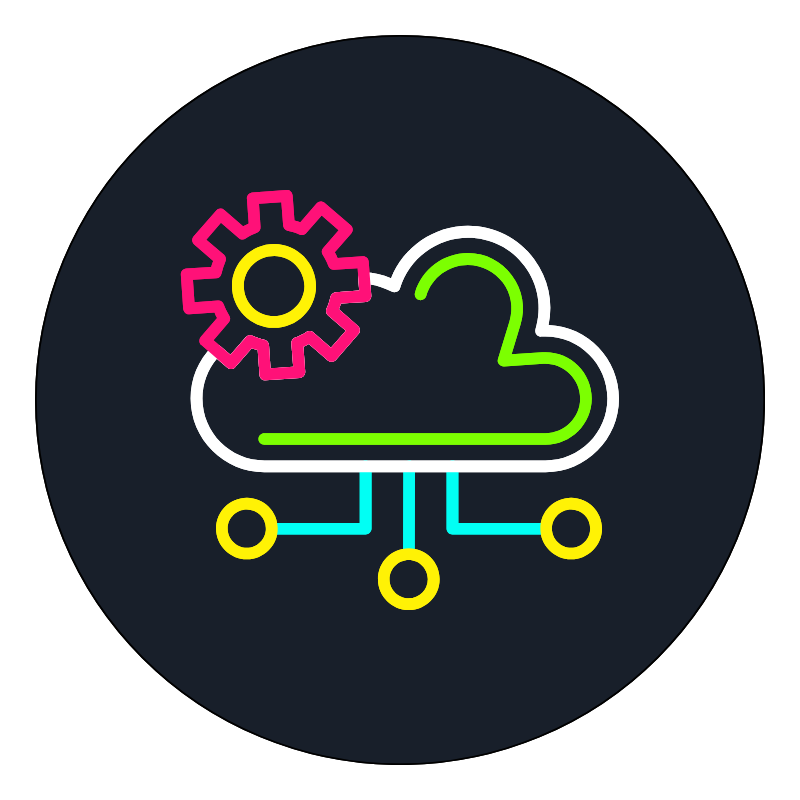Last updated on February 19th, 2025 at 11:33 am
Starting an online travel agency business in the Philippines is an exciting venture with massive potential.
The country’s tourism industry is booming, and more Filipinos are embracing digital solutions for their travel needs.
In this guide, I’ll walk you through the essential steps to launch your own online travel agency (OTA) and tap into this lucrative market.
First, Understand the Online Travel Agency Industry
Before we dive into the nitty-gritty, let’s get clear on what an online travel agency actually is.
An OTA is a digital platform that allows travellers to book flights, hotels, tours, and other travel-related services all in one place.
Think of it as a virtual travel agent, available 24/7 at the click of a button.
The Philippine OTA market is on fire right now. Here’s why:
- Growing internet penetration: More Filipinos than ever are online and comfortable with digital transactions.
- Rising middle class: Increased disposable income means more people are travelling, both domestically and internationally.
- Government support: The Department of Tourism is actively promoting Philippine destinations, driving demand for travel services.
Key players like Traveloka, Klook, and Agoda are already making waves, but there’s still plenty of room for newcomers.
The secret?
Find your niche and offer something unique.
Here are some untapped opportunities in the Philippine market:
- Eco-tourism packages
- Adventure travel for millennials
- Senior-friendly tour options
- Local cultural experiences
If you focus on a specific segment, you can carve out your own space in this competitive landscape.
Legal Requirements and Registration Process
Now, let’s talk about the boring (but crucial) stuff: legalities.
To start your online travel agency in the Philippines, you’ll need to:
- Register your business with the Securities and Exchange Commission (SEC) or Department of Trade and Industry (DTI)
- Obtain a business permit from your local government unit
- Register with the Bureau of Internal Revenue (BIR) for tax purposes
- Apply for a travel agency accreditation with the Department of Tourism
Don’t skip this step!
Operating without proper registration can lead to hefty fines and legal headaches down the road.
As for taxes, be prepared to handle:
- Value Added Tax (VAT): If your annual sales exceed ₱3 million
- Income Tax: Based on your business structure and earnings
- Local Business Tax: Varies by municipality
Pro tip: Consider getting professional liability insurance.
It’ll protect you if a customer sues over a botched booking or travel mishap.
Building Your Online Travel Agency Platform
This is where the rubber meets the road.
Your website is the heart of your OTA business, so it needs to be top-notch.
You’ve got two main options:
- Custom development: Build your platform from scratch. Pros: Total control and uniqueness. Cons: Expensive and time-consuming.
- White-label solution: Use an existing OTA software and brand it as your own. Pros: Quicker to launch and more affordable. Cons: Less customization and potential limitations.
For most startups, I’d recommend going the white-label route initially.
You can always upgrade to a custom solution as you grow.
Whichever path you choose, make sure your platform includes these essential features:
- User-friendly search and booking interface
- Secure payment processing
- Real-time inventory updates
- Customer reviews and ratings
- Mobile responsiveness
Don’t forget about mobile!
A whopping 70% of online travel bookings in the Philippines are made on smartphones.
Consider developing a dedicated mobile app to capture this market.
When it comes to payments, integrate multiple options:
- Credit/debit cards
- E-wallets (GCash, PayMaya)
- Bank transfers
- Over-the-counter payments (7-Eleven, Cebuana Lhuillier)
The more payment methods you offer, the easier it is for customers to book with you.
Establishing Partnerships and Inventory
You can’t sell travel services without, well, travel services to sell. Time to build your network of suppliers!
Start by reaching out to:
- Hotels and resorts: From budget hostels to luxury resorts
- Airlines: Both major carriers and smaller regional airlines
- Transportation providers: Car rentals, shuttle services, ferries
- Tour operators: For packaged tours and activities
Here’s the secret to scoring good partnerships: Value.
What can you offer that makes it worth their while to work with you?
Some ideas:
- Guaranteed booking volumes
- Premium placement on your platform
- Co-marketing opportunities
- Data insights on customer preferences
When negotiating commissions, start with industry standards (usually 10-15% for hotels, 5-10% for flights) and be prepared to adjust based on volume and exclusivity.
Pro tip: Don’t just focus on the big players.
Local, lesser-known providers often offer better rates and unique experiences that can set your OTA apart.
Marketing and Growing Your Online Travel Agency Business in the Philippines
You’ve got your platform, you’ve got your inventory.
Now it’s time to get customers!
Digital marketing is your best friend here. Focus on:
- Search Engine Optimization (SEO): Optimize your website to rank for relevant travel keywords. Think “best beaches in Palawan” or “budget hotels in Boracay”.
- Content Marketing: Create valuable travel content that attracts and engages potential customers. Blog posts, destination guides, travel tips – make your OTA a go-to resource for travellers.
- Social Media: Filipinos are among the world’s most active social media users. Leverage platforms like Facebook, Instagram, and TikTok to showcase destinations and deals.
- Influencer Partnerships: Collaborate with travel influencers to reach a wider audience. But be selective – choose influencers whose followers match your target market.
- Email Marketing: Build a subscriber list and nurture leads with personalized travel recommendations and exclusive offers.
Remember, in the OTA game, customer retention is just as important as acquisition. Implement a loyalty program that rewards repeat bookings and referrals.
Some ideas:
- Points system for bookings
- Exclusive members-only deals
- Early access to promotions
- Referral bonuses
The key is to make customers feel valued and incentivize them to keep coming back to your platform.
Financial Management and Scaling
Let’s talk money. Managing your finances effectively is crucial for long-term success.
When it comes to pricing, consider these strategies:
- Dynamic pricing: Adjust rates based on demand and seasonality
- Package deals: Bundle services for higher margins
- Upselling and cross-selling: Offer add-ons like travel insurance or airport transfers
Keep a close eye on your cash flow. The travel industry can be seasonal, so make sure you have enough reserves to cover lean periods.
Reinvest your profits strategically:
- Technology upgrades
- Marketing campaigns
- Expanding your team
- New market expansion
Speaking of expansion, once you’ve nailed the Philippine market, consider branching out to other Southeast Asian countries. The region’s travel industry is booming, and your experience in the Philippines will give you a solid foundation.
Overcoming Challenges in the OTA Business
Running an OTA isn’t all smooth sailing. Here are some common challenges you’ll face and how to tackle them:
Seasonality:
- Diversify your offerings to include both peak and off-peak destinations
- Create special promotions for low seasons
- Target different customer segments (e.g., business travellers vs. holidaymakers)
Customer Expectations:
- Be transparent about your policies and fees
- Provide excellent customer support (consider 24/7 availability)
- Under-promise and over-deliver
Fierce Competition:
- Focus on your unique value proposition
- Build strong brand loyalty
- Continuously innovate and improve your platform
Technological Changes:
- Stay updated on industry trends (e.g., AI, virtual reality)
- Be ready to adapt your platform to new technologies
- Invest in ongoing training for your team
Remember, every challenge is an opportunity in disguise. The OTAs that thrive are those that can adapt and innovate in the face of adversity.
Final Thoughts
Starting an online travel agency business in the Philippines is an exciting journey with immense potential.
Follow these steps – from understanding the market landscape to building your platform, establishing partnerships, marketing effectively, and managing your finances – you’ll be well on your way to success.
The future of online travel in the Philippines is bright.
As more Filipinos embrace digital solutions and seek out unique travel experiences, there’s never been a better time to dive into this industry.
So what are you waiting for?
Your OTA adventure starts now!
FAQs
Q: How much capital do I need to start an OTA in the Philippines?
A: Initial costs can vary widely, but expect to invest at least ₱500,000 to ₱1 million for a basic setup. This covers registration fees, website development, and initial marketing efforts.
Q: Do I need travel industry experience to start an OTA?
A: While experience is beneficial, it’s not absolutely necessary. What’s crucial is a deep understanding of customer needs, strong business acumen, and a willingness to learn the industry quickly.
Q: How long does it take to start making a profit with an OTA?
A: It typically takes 12-18 months to break even. Profitability depends on factors like your marketing effectiveness, operational efficiency, and market conditions.
Q: Can I run an OTA as a side business?
A: It’s possible, but challenging. OTAs require significant time investment, especially in the early stages. Consider starting with a niche focus if you’re running it alongside other commitments.
Q: What’s the biggest mistake new OTA owners make?
A: Underestimating the importance of customer service. In the travel industry, things can and will go wrong. How you handle these situations can make or break your reputation and business.
Read also:
 Web HostingCost-effective shared hosting solutions
Web HostingCost-effective shared hosting solutions Reseller HostingStart your own hosting business without tech hustle
Reseller HostingStart your own hosting business without tech hustle Affiliate ProgramEarn commission by referring customers to our platforms
Affiliate ProgramEarn commission by referring customers to our platforms cPanel HostingHosting powered by cPanel (Mostly user friendly)
cPanel HostingHosting powered by cPanel (Mostly user friendly) Windows HostingOptimized for windows based-applications and sites
Windows HostingOptimized for windows based-applications and sites Domain SearchFind and register available domain names in seconds
Domain SearchFind and register available domain names in seconds All DomainsExplore and register domain extensions across the world
All DomainsExplore and register domain extensions across the world Domain Transfermove your domain to us with zero downtime and full control
Domain Transfermove your domain to us with zero downtime and full control Whois LookupLook up domain ownership, expiry dates and registrar information
Whois LookupLook up domain ownership, expiry dates and registrar information .com DomainSecure the most recognized domain for global credibility
.com DomainSecure the most recognized domain for global credibility VPS HostingScalable virtual servers. Full root access. Faster speed.
VPS HostingScalable virtual servers. Full root access. Faster speed. Managed VPSNot a tech expert? Choose our fully managed VPS server.
Managed VPSNot a tech expert? Choose our fully managed VPS server. Dedicated ServersGet the full power and complete control of your own physical server.
Dedicated ServersGet the full power and complete control of your own physical server.
